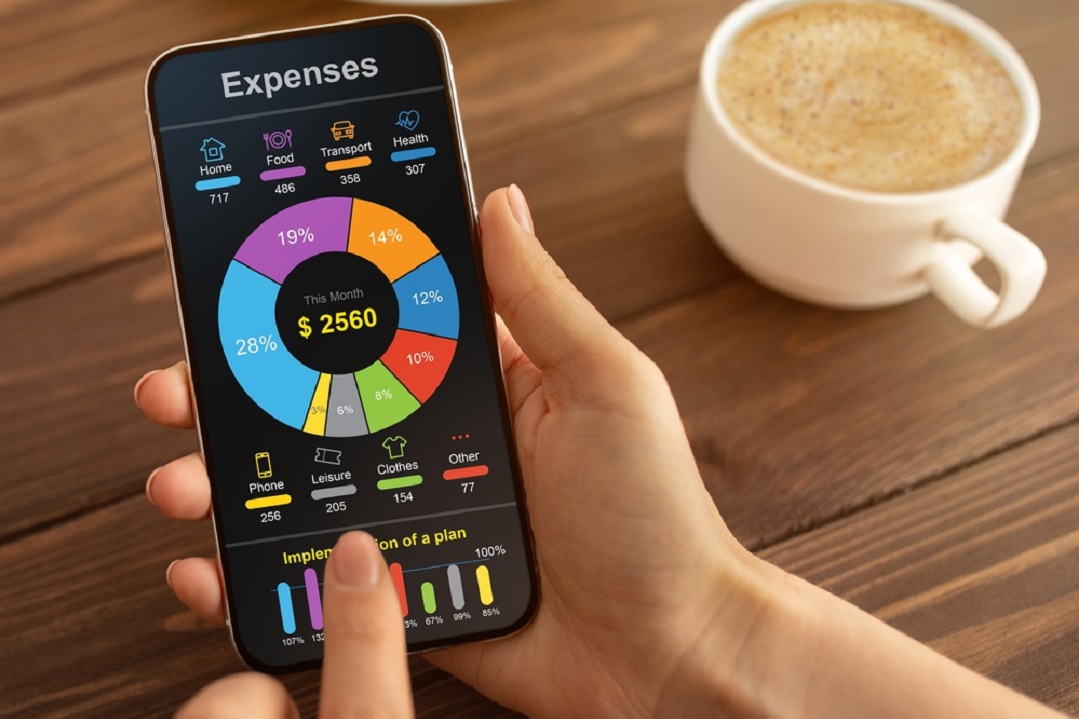Save money every month: Saving money every month isn’t about giving up your favorite coffee or cutting out all fun. Instead, it’s about creating small, smart habits that help you enjoy life while building financial freedom. In fact, whether you’re managing a family budget, running a business, or earning your first paycheck, the secret lies in saving wisely without sacrificing comfort.
When you shift your mindset from cutting back to planning ahead, saving feels empowering rather than restrictive. Moreover, it’s not about deprivation — it’s about designing a lifestyle that offers peace of mind, balance, and long-term control over your finances.
So, if you’re ready to take charge of your money, let’s explore seven easy and proven ways to save every month — and still live well.

📱 1. Track Your Spending with Smart Apps: Save money every month
Before you can save, you need to understand where your money goes. Surprisingly, small and unnoticed expenses — like digital subscriptions or takeaway snacks — can quietly drain your wallet over time.
To get started, track every expense using one of these simple tools:
- Walnut (India) or Mint (Global) – automatically categorize your transactions and show where your money flows.
- Goodbudget or YNAB (You Need A Budget) – create digital envelopes to control spending in each category.
- Google Sheets – build your own tracker and review totals weekly for a clear financial snapshot.
Once you begin tracking, your spending habits will start to change naturally. As a result, you’ll make smarter financial choices without feeling restricted. Even cutting one unnecessary purchase daily can add up to thousands saved every year.
💬 Pro Tip:
Set aside 10 minutes weekly for a “money review.” During this short check-in, look at what you spent, spot where you overspent, and plan simple adjustments for the week ahead. Over time, this small habit leads to stronger money control and lasting savings success.
🔋 2. Switch to Energy-Efficient Habits: Save money every month
Your electricity and water bills may be eating away at your savings without you realizing it. The good news? You can reduce those costs easily — and help the planet too.
Try these quick switches:
- Turn off fans, lights, and devices when not in use.
- Replace old bulbs with LED lights (use 70–80 % less power).
- Unplug chargers and electronics overnight.
- Wash clothes in cold water instead of hot.
- Keep your AC at 24°C instead of 20°C to save up to 20 % on bills.
By adopting energy-smart habits, you’ll save money every month while making your home eco-friendly and efficient.
🛒 3. Plan Your Meals and Shop Smart
Grocery shopping is one area where most people overspend without realizing it. Planning your meals helps you avoid impulse purchases and food waste.
Here’s how to do it right:
- Write a weekly meal plan before shopping.
- Buy only what’s on your list — and avoid hungry shopping trips!
- Choose seasonal produce for better prices and freshness.
- Prefer store brands or generic products — they often match quality at lower cost.
- Cook in batches — home-cooked meals save both time and money.
Small meal-planning efforts can lead to significant monthly savings and healthier eating habits.
💬 Bonus Tip: Use digital payment apps like Paytm, Amazon Pay, or Google Pay to earn cashback on grocery bills.
💳 4. Review and Reduce Subscriptions Regularly
Streaming platforms, fitness apps, and cloud storage — it’s easy to lose track of monthly subscriptions that keep charging silently.
Here’s a quick checklist:
- Review every auto-payment from your bank or UPI app.
- Cancel the ones you don’t use at least twice a month.
- Downgrade premium plans to basic tiers if possible.
- Look for family or bundled plans to share costs.
Also, call your internet or phone provider to ask for promotional discounts or better rates — many companies offer hidden deals to long-term customers.
💬 Smart Move: Set a quarterly reminder to review subscriptions. Regular checks prevent waste and keep your budget under control.

💸 5. Make the Most of Cashback, Coupons, and Rewards
If you shop online or pay bills digitally, cashback and reward programs are your best friends. They’re like small discounts you earn automatically — and over time, they really add up.
Practical tips:
- Use credit cards that offer cashback (but pay in full every month).
- Download CashKaro, CRED, or Honey to find live offers.
- Always search for a promo code before checkout.
- Join loyalty programs at supermarkets, coffee shops, and fuel stations.
These small savings accumulate silently, reducing your annual expenses without changing your habits.
💬 Note: Don’t buy unnecessary items just to earn points — saving means being intentional, not impulsive.
🏦 6. Pay Yourself First — Automate Your Savings: Save money every month
One of the smartest money rules is simple: Save before you spend.
Set up an automatic transfer to a savings or investment account right after your salary hits. Treat this transfer like a fixed monthly bill — non-negotiable and consistent.
You can use:
- Recurring deposits with your bank.
- Mutual fund SIPs through Groww, Kuvera, or Zerodha.
- Separate bank accounts for savings and daily expenses.
When saving becomes automatic, it removes temptation and builds long-term discipline effortlessly. Even a modest monthly amount compounds beautifully over time.
💬 Tip: Start small — even ₹500 or $10 monthly can grow into something meaningful with consistency.

🎯 7. Try a 30-Day Money-Saving Challenge
Turning saving into a fun challenge can make it easier to stick with.
Try this simple 30-day plan:
1️⃣ Skip one luxury coffee or dessert this week.
5️⃣ Bring lunch from home instead of ordering.
10️⃣ Pause one paid subscription for a month.
15️⃣ Walk or cycle instead of using a cab.
20️⃣ Declare one “no-spend day.”
25️⃣ Compare your month’s spending with last month’s.
30️⃣ Reward yourself — maybe with a small treat or family outing.
Challenges make saving feel like a game instead of a chore, helping you stay motivated and mindful.
✨ Conclusion: Save Smart, Live Well
Save money every month doesn’t mean living with restrictions — it’s about spending wisely and planning with purpose. In fact, with the right approach — from tracking your expenses to optimizing bills — you can enjoy a lifestyle that balances comfort and financial growth.
To begin with, start with one or two small actions today. For example, cancel an unused subscription, set up a savings auto-transfer, or plan your weekly groceries. Moreover, these simple habits add up over time. Within a few months, you’ll notice better control, less stress, and steadily growing savings.
Remember, success in saving doesn’t come from one big change — it’s built through consistent, mindful habits that last a lifetime. As a result, when you save smart, you don’t just protect your wallet — you also build freedom, security, and peace of mind for your future self.
